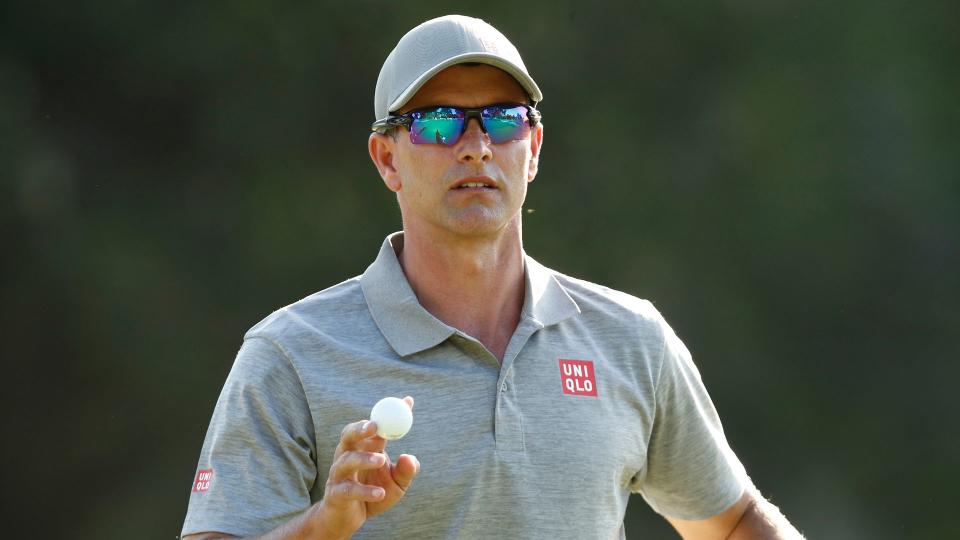
DUBLIN, Ohio – The building showdown between the game’s best players and the rules makers reached an inflection point Tuesday when both sides met to discuss the USGA and R&A’s proposed Model Local Rule (MLR) on golf balls.
The two associations proposed the new testing protocols for golf balls used in “elite competitions” in March, which, by some estimates, could lead to drives for top professionals that are 20 to 25 yards shorter.
On Tuesday afternoon, representatives from the USGA and R&A – including Mike Whan and Martin Slumbers, the chief executives of each association, respectively – met with the PGA Tour’s 16-member Player Advisory Council, the policy board and Tour executives, including commissioner Jay Monahan . According to various sources, the reception from players was predictably chilly.
The 2 ½-hour meeting included a 1-hour presentation from the USGA and R&A followed by a separate presentation from three equipment companies – Titleist, Callaway and Bridgestone. The consensus suggested any potential rollback would not be supported by players which would leave the Tour in an awkward position if the rule is adopted.
“I feel like that would be going against the grain strongly of what the sentiment is, and certainly off the back of yesterday, I think that would be surprising if that was just the thing that we did,” said Adam Scott, the chairman of the PAC, when asked if he thought the Tour would adopt the new rule. “I think there’d be some pushback on that from the membership.”
The current comment period runs through August and although the majority of Tour members, with the notable exception of Rory McIlroy, have been opposed to the new rule, it remains unclear if the circuit would follow the rules makers if they adopt the new standard.
“If they decide they are going to move forward then it comes back to us, the PGA Tour, to ultimately make a decision on whether we’d use the model of the local rule in competitions,” said Andy Pazder, the Tour’s chief tournaments and competitions officer. “It’s way too early for me to theorize if we’d take one position or another.”
Of particular interest to most players is some of the data the USGA and R&A are using to justify a rollback, which predates the Tour’s ShotLink program and was created to provide a better picture of distance gains at the highest level.
“Some things they’re looking at are a bit skewed or looking too much at the top end or outliers versus maybe averages and where things have been for the past 10 or 20 years where there really hasn’t been much movement or increases,” said Rickie Fowler, a member of the PAC. “The growth of distance [over the last 20 years] is fairly insignificant. I don’t see it as a spot where we need change or as big of a change that’s being proposed.”
Another area of concern for players is the proposed testing protocols that would use a clubhead speed of 127 mph. Cameron Champ leads the Tour this season in club head speed with an average of 126.47 mph. The Tour average is 115.21 mph.
Tour official says ’24 schedule almost finalized, but not settled on no-cut events
This is the second consecutive year members from the USGA and R&A met with players at the Memorial and Whan said Tuesday’s meeting led to even more in-depth conversations Wednesday at Muirfield Village, but he conceded the rollout has not been perfect.
“This process is really strange. You have to go to the podium and say what you’re doing and then spend the next six months going around talking to somebody. As I said to the players last night, ‘I’m sorry about this process,’” Whan said. “It’s fair to the manufacturers but sometimes it’s not fair to the players. [Tuesday’s meeting] was just a chance for us to make sure they understood what was driving our thinking and why.”
Although it remains unclear what the Tour would do if the new rule is adopted, there is a scenario where the circuit decides not to adopt the local rule while at least two of the four majors, the US Open and Open Championship, would be played with the rolled-back ball.
“Ultimately, the players will end up deciding whether they want to mess around for two weeks with another ball,” Scott said. “I really believe there’s a lot at stake here. The way the testing has been done as for the future, that’s hard to understand when we’re not there. We’re setting rules for future generations, which is how it’s been explained. Because that’s where they’re going.”